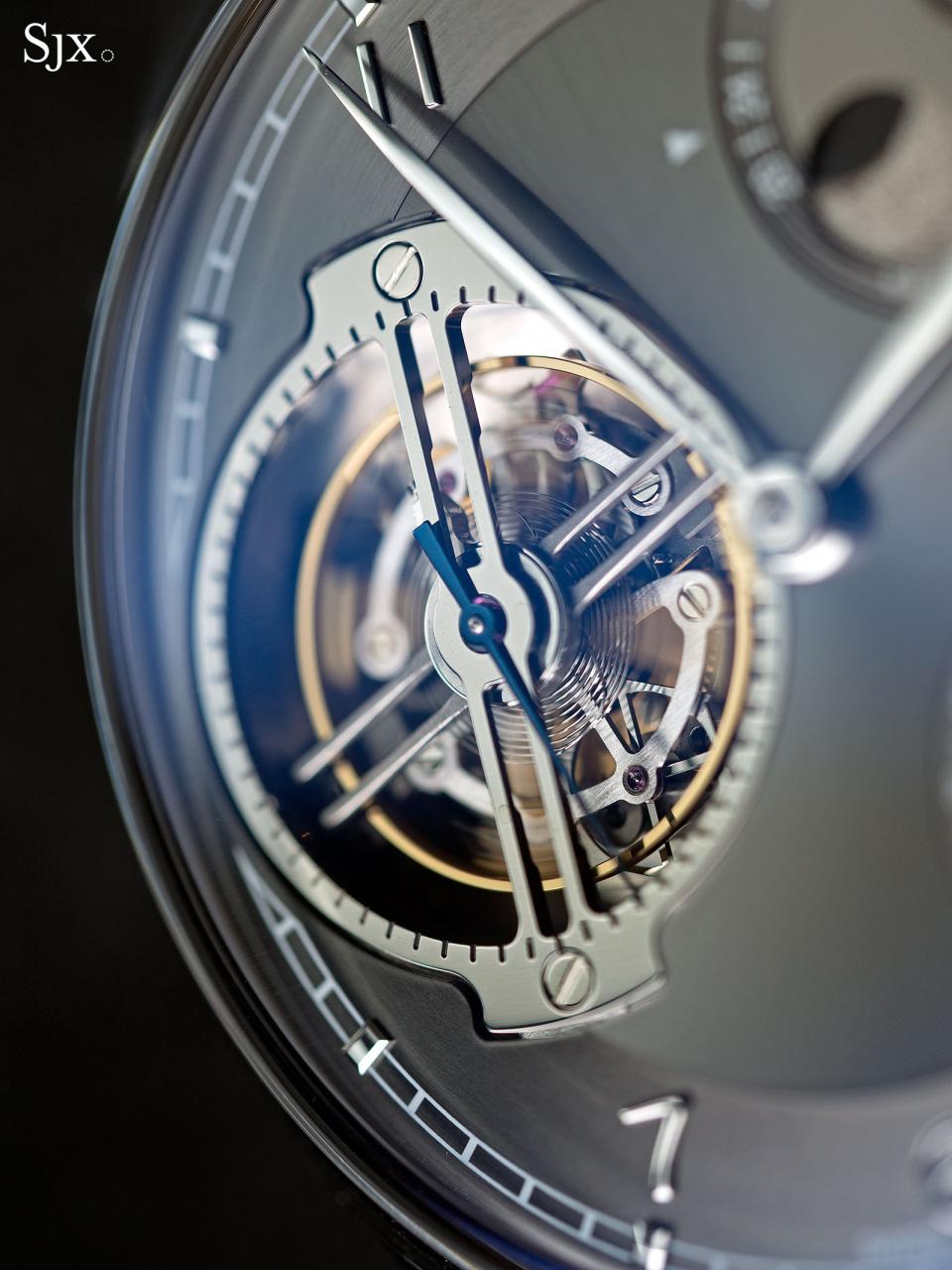I also wish to say right now which I prefer the chronograph version of the Fifty Fathoms Bathyscaphe over the three-hand version. Obviously, not everybody agrees with me, but that is my personal preference as I discover the three-hand model’s dial somewhat visually bare. On the flip side, I surely prefer the three-hand model of the original Fifty Fathoms versions over their chronograph models.A good grounds for this aside from aesthetics is that the motion inside of the Rfactor 2 Blancpain Download Fifty Fathoms Bathyscaphe Flyback Chronograph which is the in-house-made Blancpain caliber F385 automatic chronograph. You can view the movement through the rear of the case, and it is not hard to tell that it’s lovely in both decoration and design. That’s just like the celebrated Zenith El Primero, and 1Hz faster than most conventional 4Hz chronograph watches.Given the faster operating speed of the movement you get two areas of advantages. First is a bit less useful to most people, and that’s the capability to be a little more precise when using the chronograph. Second is how a greater working frequency of the balance wheel means that rate result mistakes are phased out more. That translates into additional precision over time – a great thing. It’s correct that 5Hz movements of any kind are rare, and in dedicated dive watches this is pretty much the only one that I can think of.The caliber F385 includes a power reserve of 50 hours, and the chronograph has a flyback complication as well. It is produced from 322 parts, and apparently is especially secured into the event of the Fifty Fathoms Bathyscaphe Flyback Chronograph for shock protection functions. The movement features a silicon hair spring, which adds the advantages of greater durability and accuracy over time.
At its heart, this view is about supplying a special layout for two complication sets that you don’t frequently find together. That is a subsidiary GMT hand to indicate another time zone, as well as an yearly calendar complication. The latter is quite elegantly laid out using the calendar data being signaled via three distinct windows on the dial. Underneath is a series of three disks which overlap. What is interesting is that despite the quantity of information on the dial (period, next 24-hour time period, date, day( and month) that the face of the Blancpain Price List Villeret Quantieme Annuel GMT is relatively sparse and clean.Lovers of only symmetrical dials will probably find the eccentric design on the Blancpain Quantieme Annuel GMT dial bothersome, and those who enjoy a bit of asymmetry within their watches will probably appreciate the look in addition to the pristine legibility. This steel version of this Blancpain Quaniteme Annuel GMT is the most bizarre looking of the series. “Let me add here that the model you are seeing images of is really in an 18k white gold case, but it seems like Blancpain will produce it like a steel version and the exact same 18k white gold instance for another dial choice. This is a possibility, but it’s hard to confirm, as their site is unclear regarding whether or not an 18k white gold version with this clean white dial is available.As a dress watch, I like the calming effect of this blank dial that is otherwise quite practical. The 40mm-wide instance is 11.04mm thick, and water resistant to 30 meters. It wears nicely thanks to the cozy case and appears bigger given the thin bezel construction. Distinctive Blancpain Villeret-style Roman numerals and matching leaf-style hands increase the brand’s trademark appearance. In steel and red gold, the Blancpain Villeret Quantieme Annuel GMT watch even includes a matching bracelet option that I quite like – along with the black alligator strap option.
The situation feels perfectly sized at 43.60mm wide. It is also 15.25mm thick and has a lightly domed AR-coated sapphire crystal.Around that the dial is a smoothly working 120-click, uni-directional rotating diver-style bezel. The outer bezel is titanium, with Liquidmetal (another technology shared with Omega) and blue ceramic because the rest of the bezel. The crown and pushers will also be in blue ceramic – left equally nicely.Given that this is a sport watch, the most crucial element other than durability is legibility. I also like that the subdials on the face are visually minimized. In fact, the most prominent elements on the dial are the various hands in addition to the major markers. This allows the eyes to focus on the most important components, though other things (such as the chronograph subdials) are simple to read, but also not “in mind” when you don’t want to appear at them.Perhaps the only controversial element of the dial is the date window. It does help sales of watches to have a date complication. It’s also great that Blancpain didn’t style the dial with the date window clipping off anything else. However, the date window is tilted so it’s a little odd to read with its position between 4 and 5 o’clock. Additionally, the date disk itself is black, and this is a bit darker than the “meteor grey” dial color of the watch itself. It’s really not a huge deal, but it’s going to be the 1 thing people may complain of in the otherwise beautiful dial design. There are other splendid details that you’ll notice from the dial by just looking at it. Begin by analyzing the smart design of this subdials, as well as the largely polished metal-framed hour mark.
Although featuring a constant force tourbillon, moon phase and a four-day power reserve, the Portugieser Constant-Force Tourbillon is a dialled down version of the most complicated (and expensive) IWC wristwatch ever made, the Portuguese Sidérale Scafusia introduced in 2011.
Powered by the same calibre 94800 found in the discontinued Ingenieur with the same features, the Portugieser Constant-Force Tourbillon has an aperture at nine o’clock that reveals the centrepiece of the movement, a large tourbillon regulator.
Though the tourbillon itself is large, the cage measures almost the radius of the dial and the balance wheel is only slightly smaller, the construction is compact, with the constant force mechanism integrated into the tourbillon.
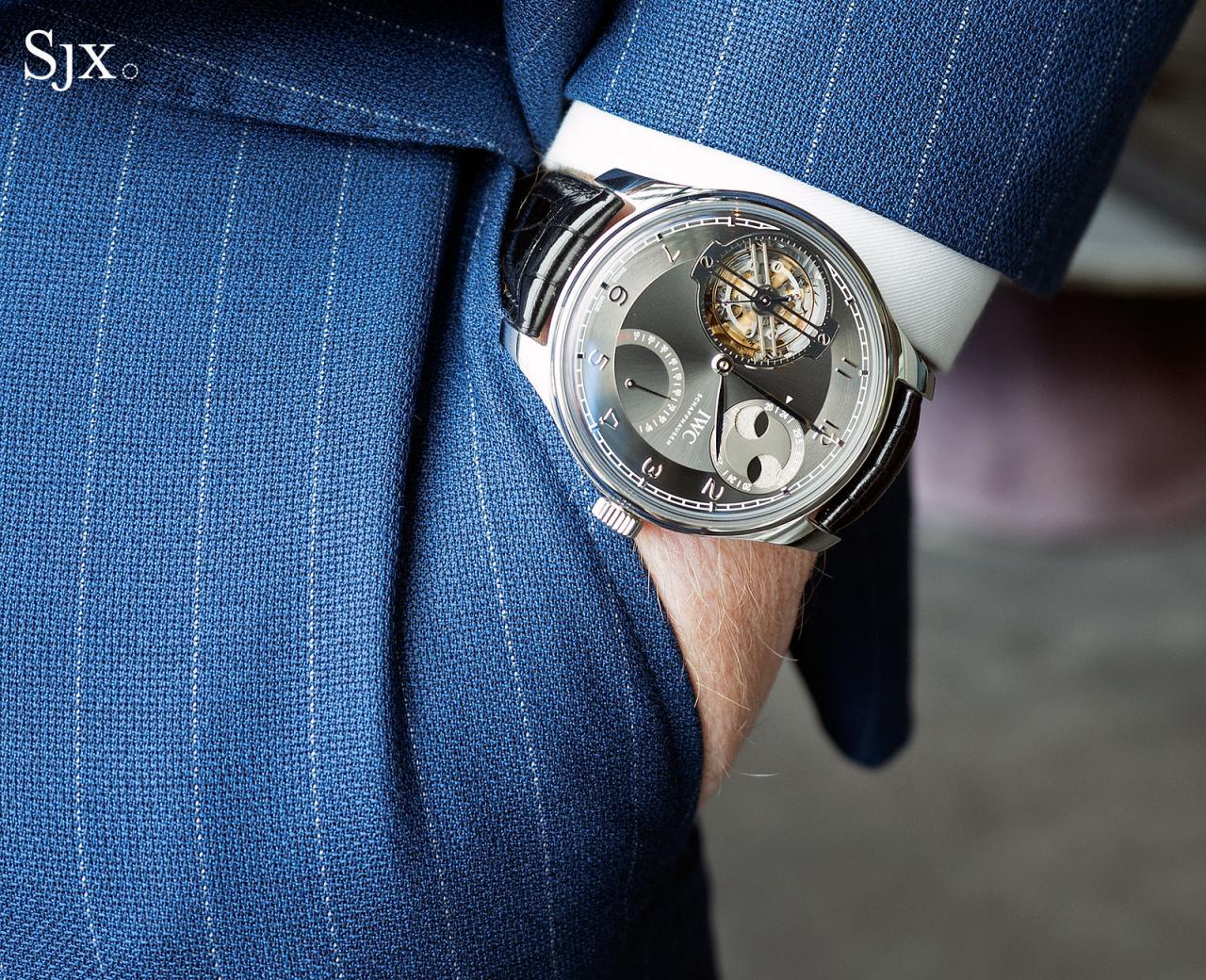
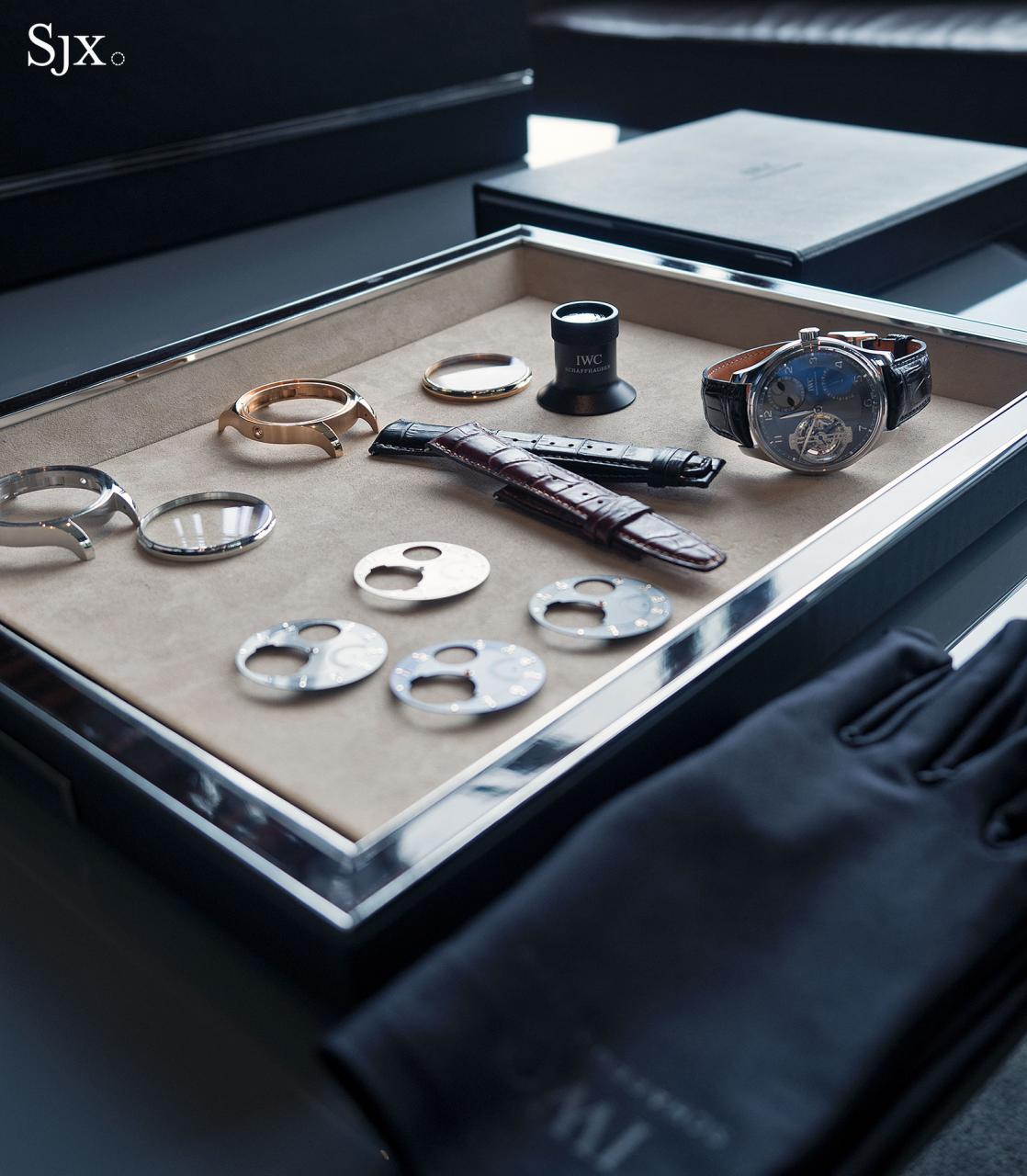
Developed in collaboration with complications developer Chronode – founder Jean-Francois Mojon worked at IWC for a decade before starting Chronode – the tourbillon has a tiny spring mounted under the escape wheel.
Once a second this spring accumulates and releases power from the mainspring, ensuring that the escapement is driven by a small, steady supply of energy. This in turn keep the balance beating at a constant amplitude, and also gives the tourbillon cage a rotation that moves in one-second steps.
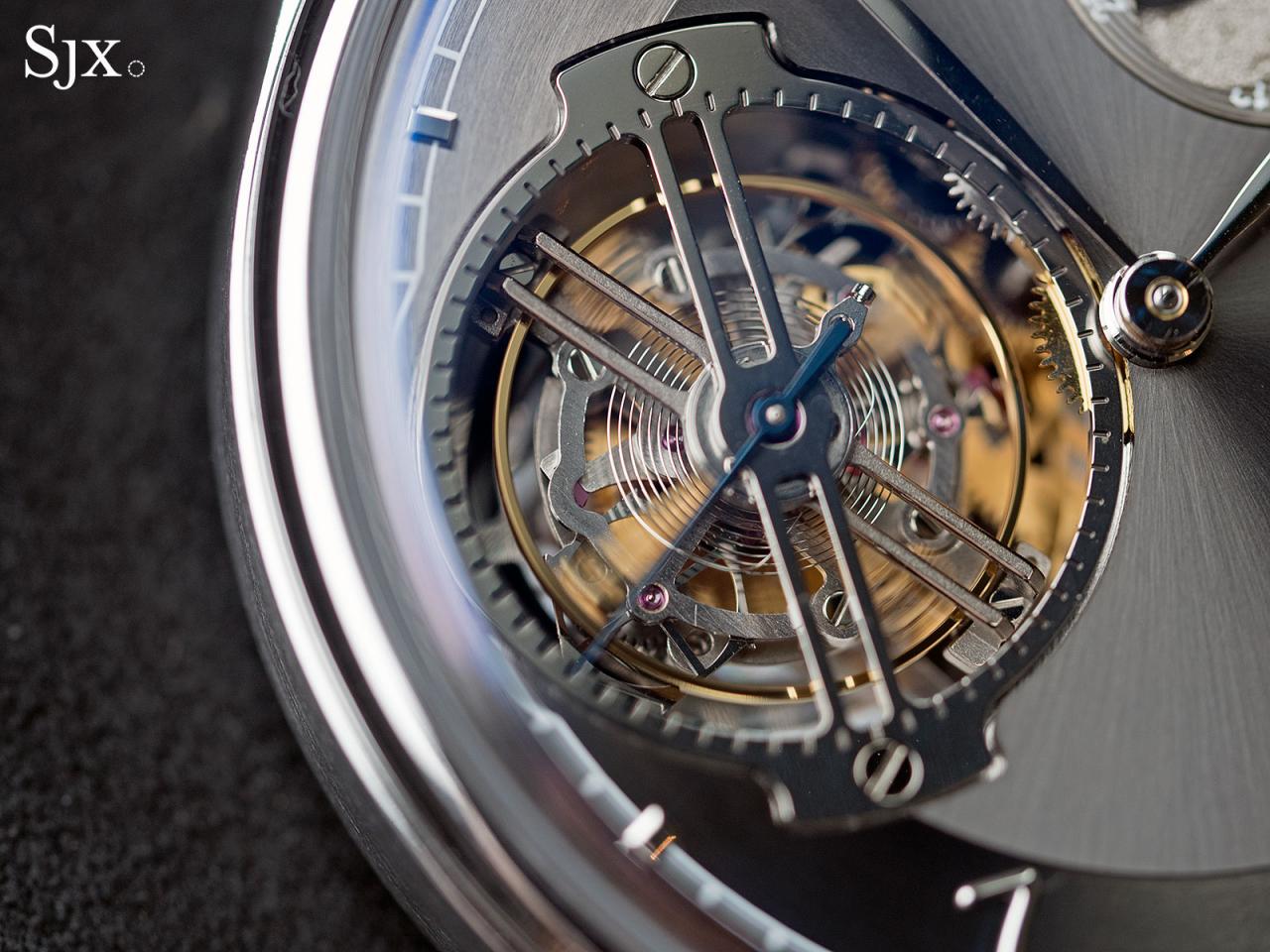
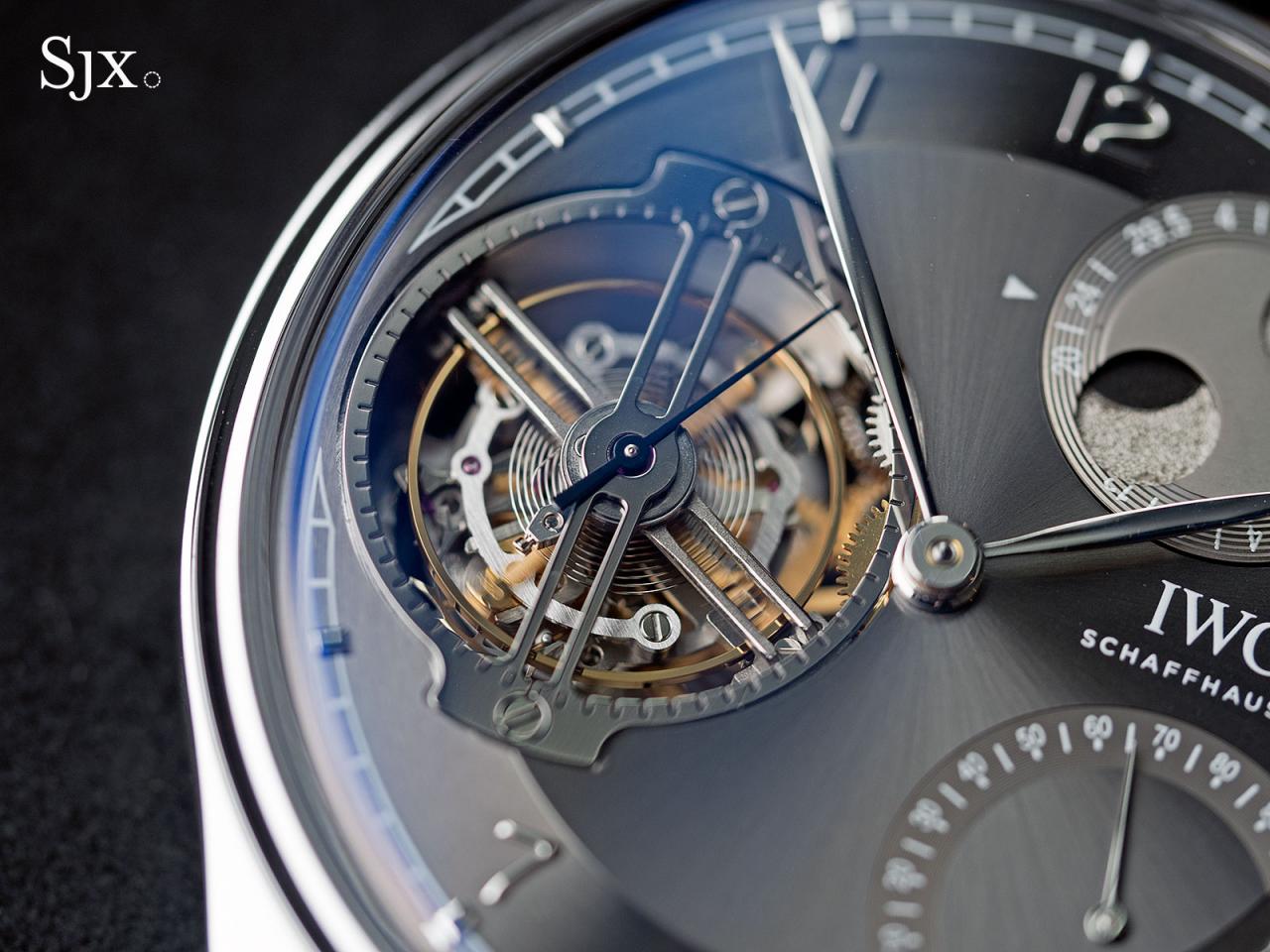
That only holds for the first two days of the 96-hour power reserve, when the mainspring is sufficiently wound to provide enough power to keep the constant force mechanism going at an optimal rate. Once the two-day mark is passed, the constant force disengages and the tourbillon functions like a conventional tourbillon.
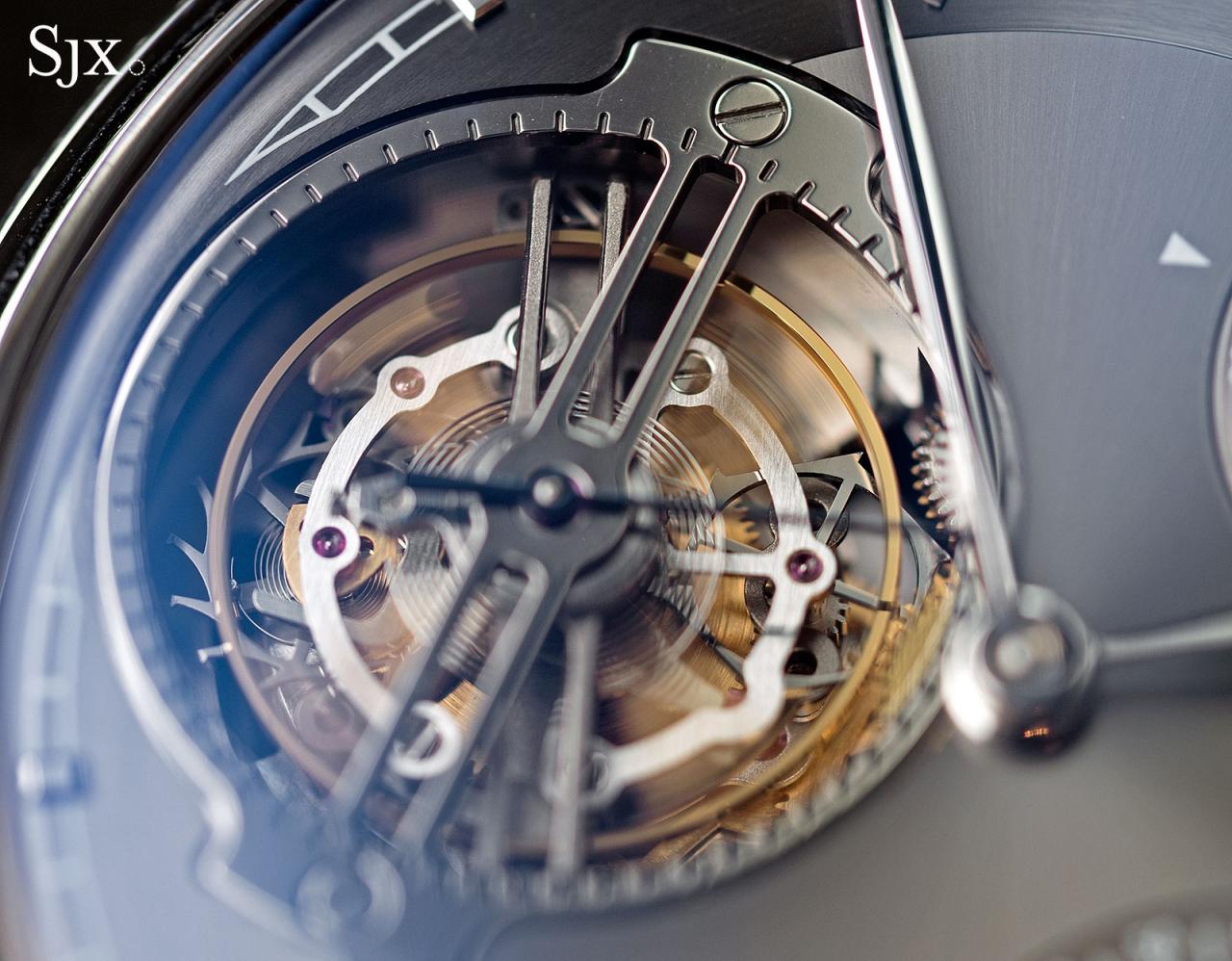
The constant force spring is visible on the left, under the escape wheel
At one o’clock is the double hemisphere moon phase, with the moon phase disc cast to resemble the cratered surface of the Moon. And just below that is the power reserve display.
Unlike the Portuguese Sidérale Scafusia that incorporated a star chart on the back of the watch, which is why it is an enormous 17.5mm in height, the Portugieser Constant-Force Tourbillon is a relatively slim 13mm, even with the high domed sapphire crystal.
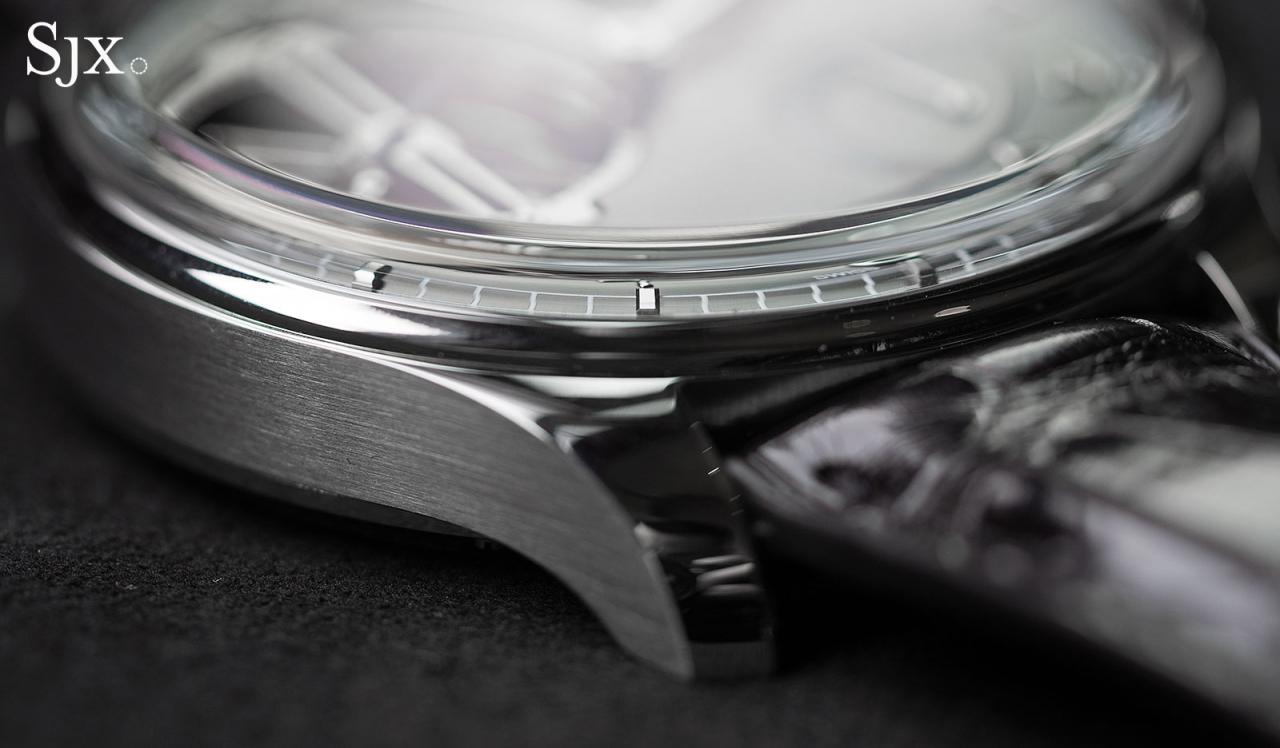
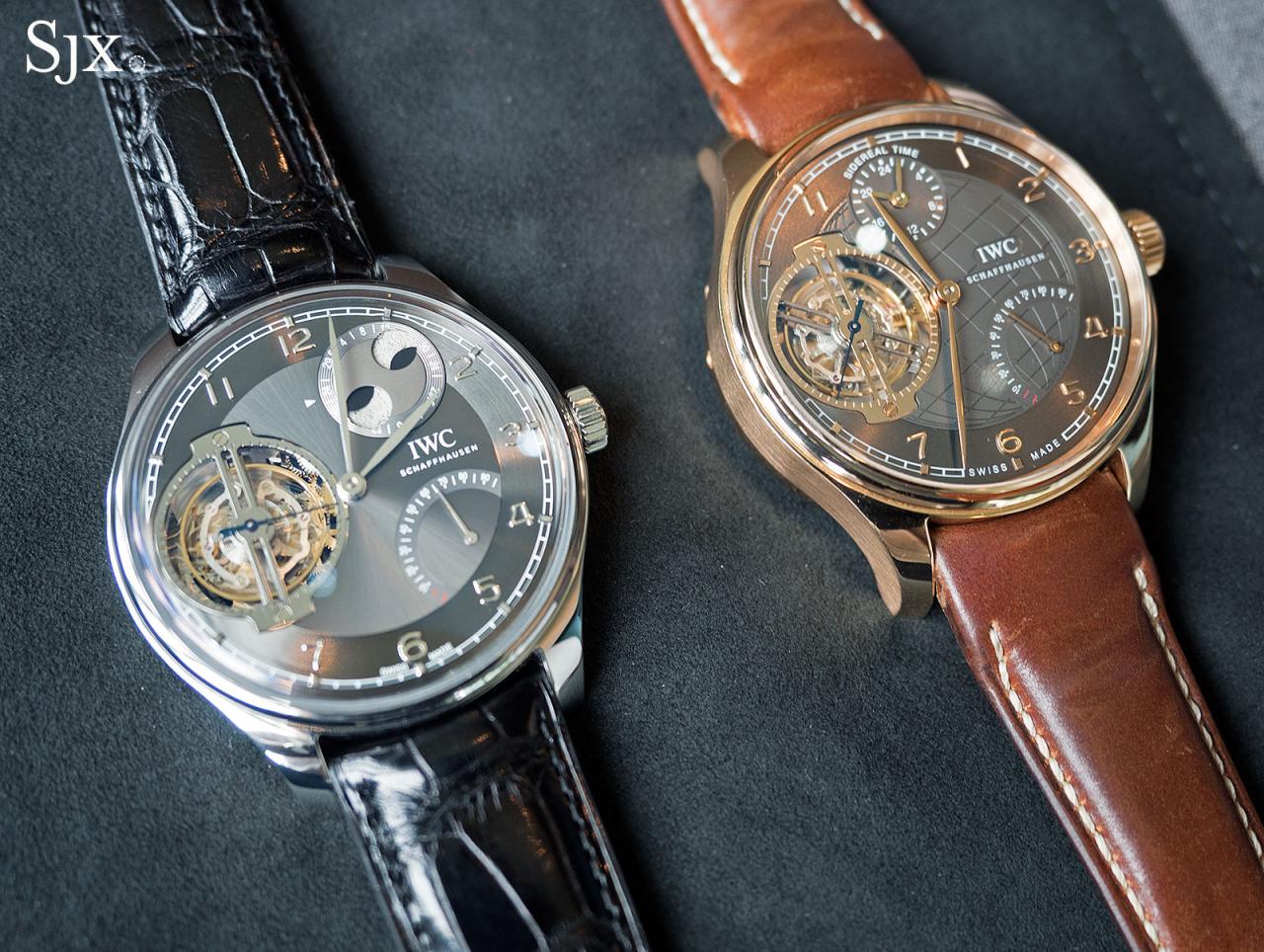
The Sidérale Scafusia at right
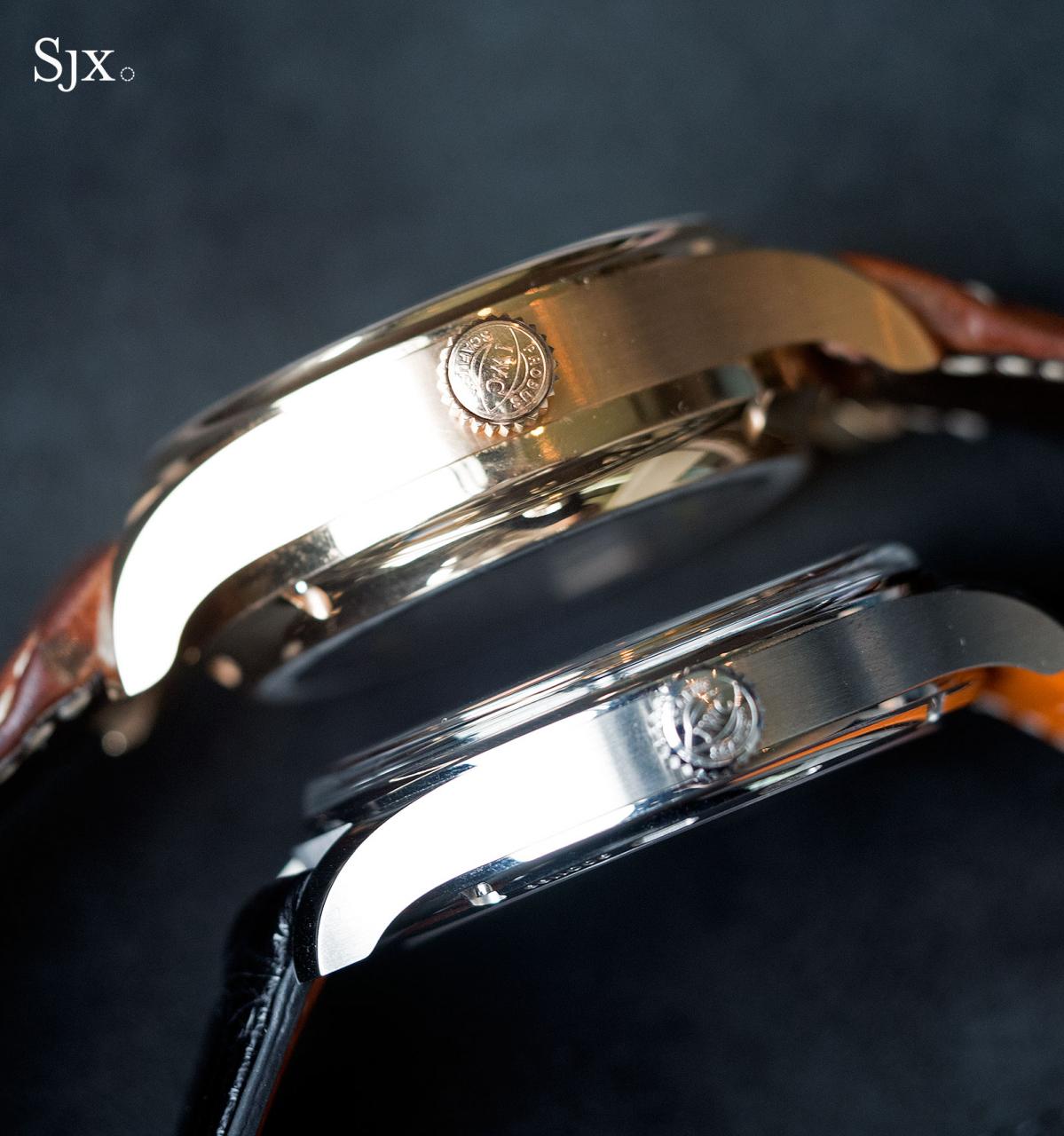
17.5mm vs 13mm
The case is a large 46mm, which gives it relatively elegant proportions though it is still a large watch.
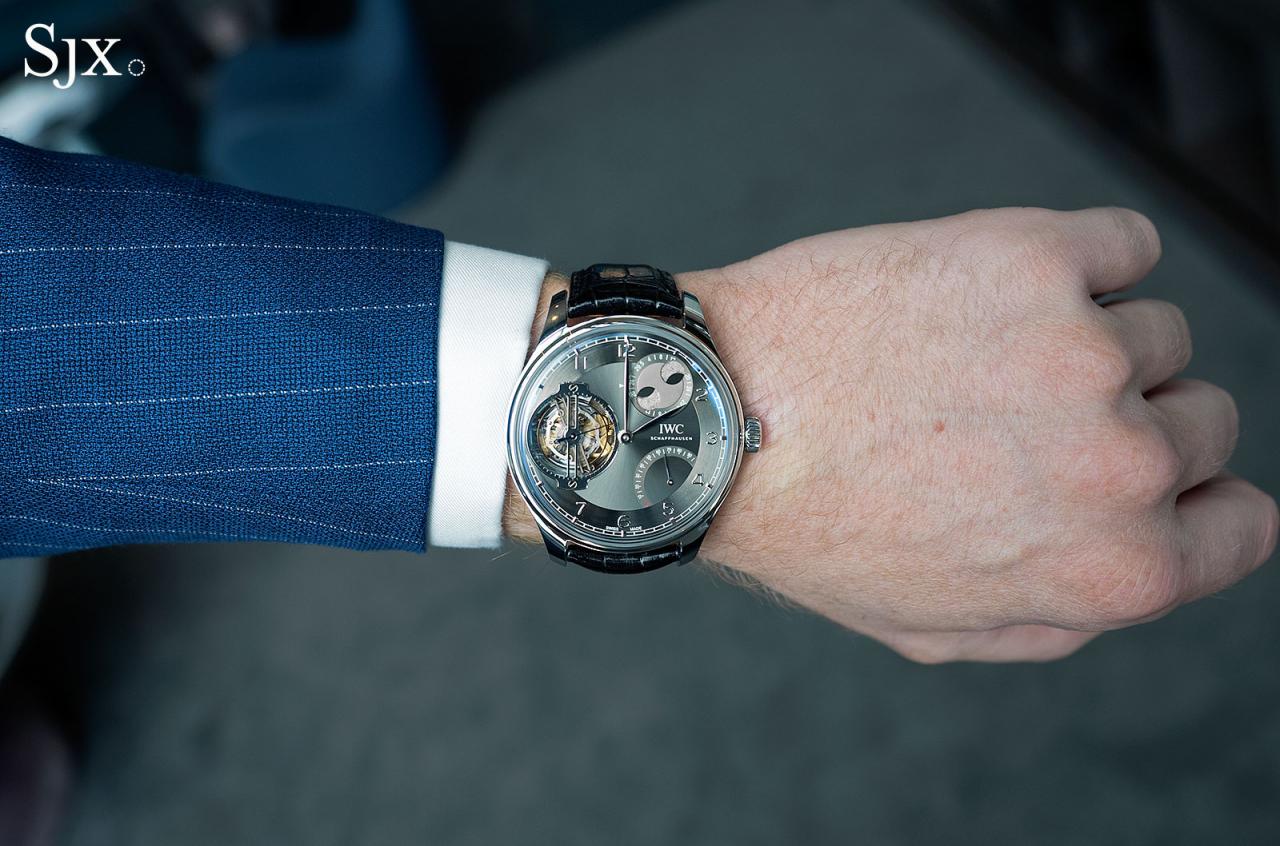
The back reveals the movement and its workmanlike finish. Historically IWC has never been associated with decorative finishing – clever and concise engineering was its thing – so the functional appearance of the movement is in keeping with the brand’s identity.
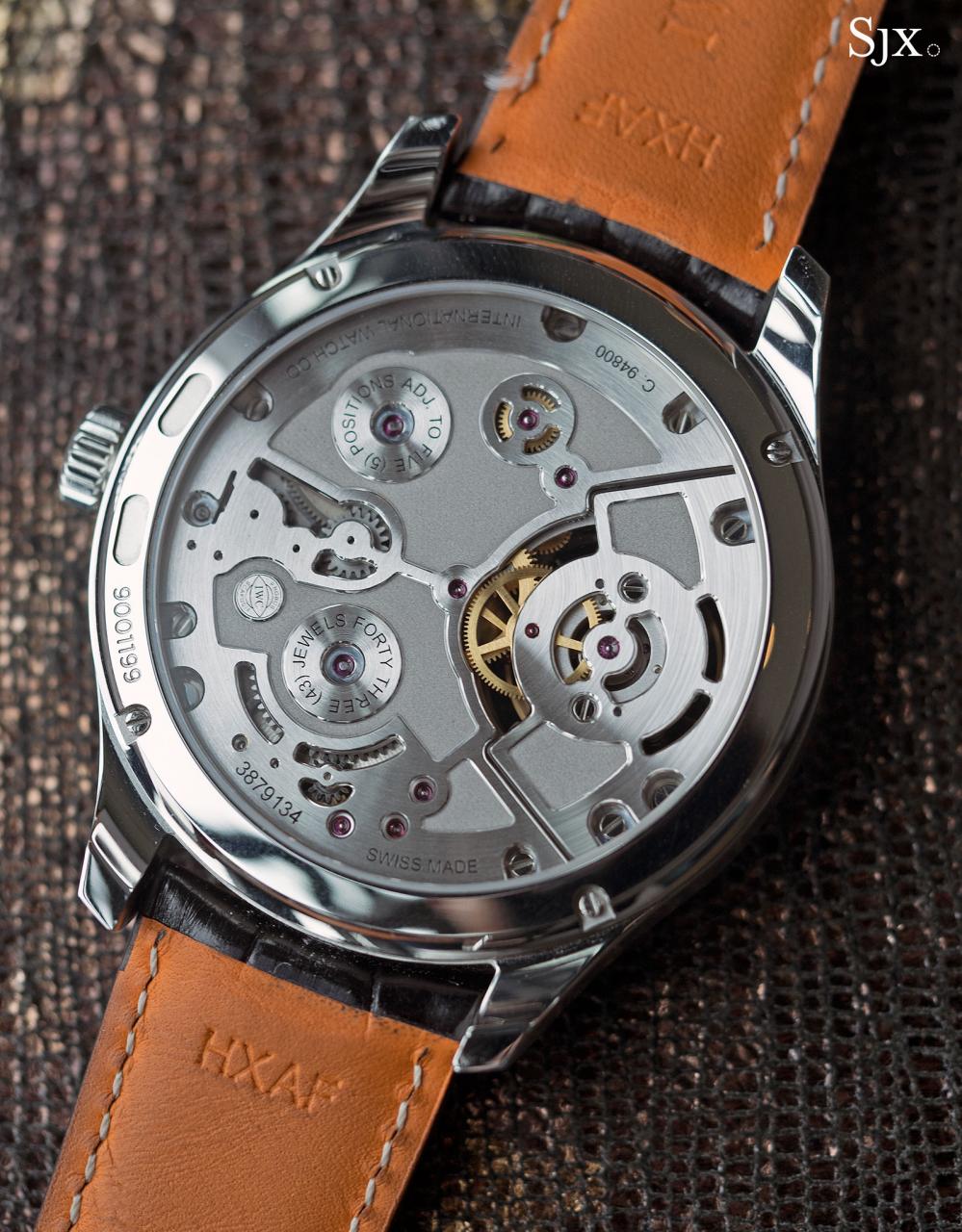
Even if not fancy the movement is attractive, with variation of the surfaces finishes that create an appealing contrast. The overall finishing is careful, albeit applied by machine.
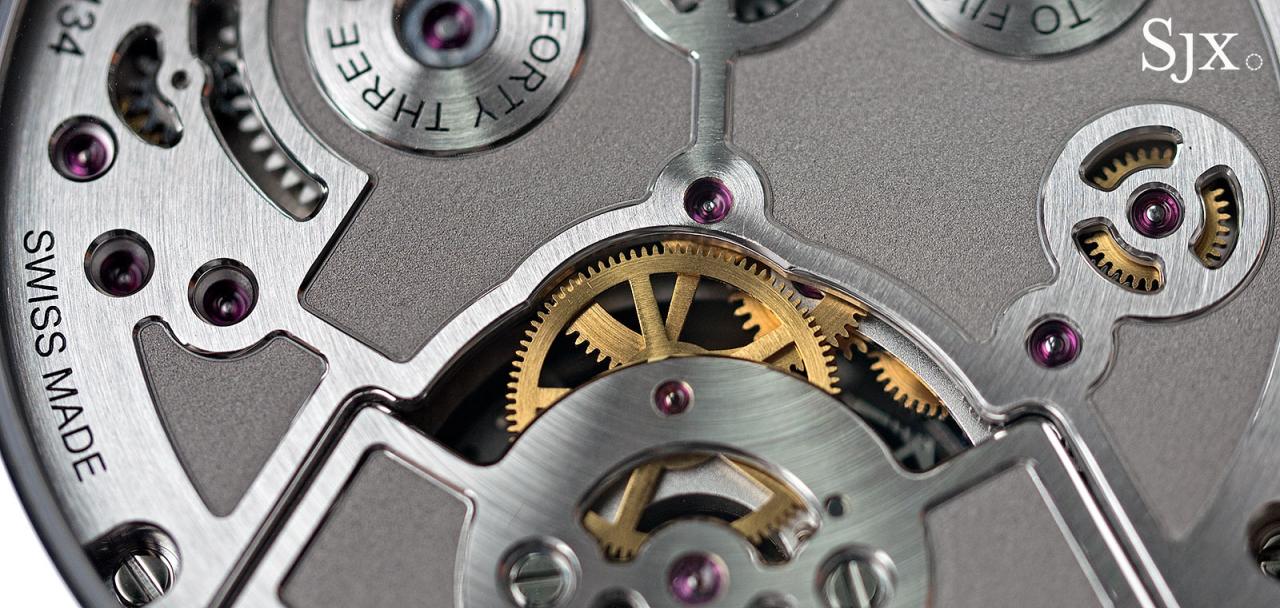
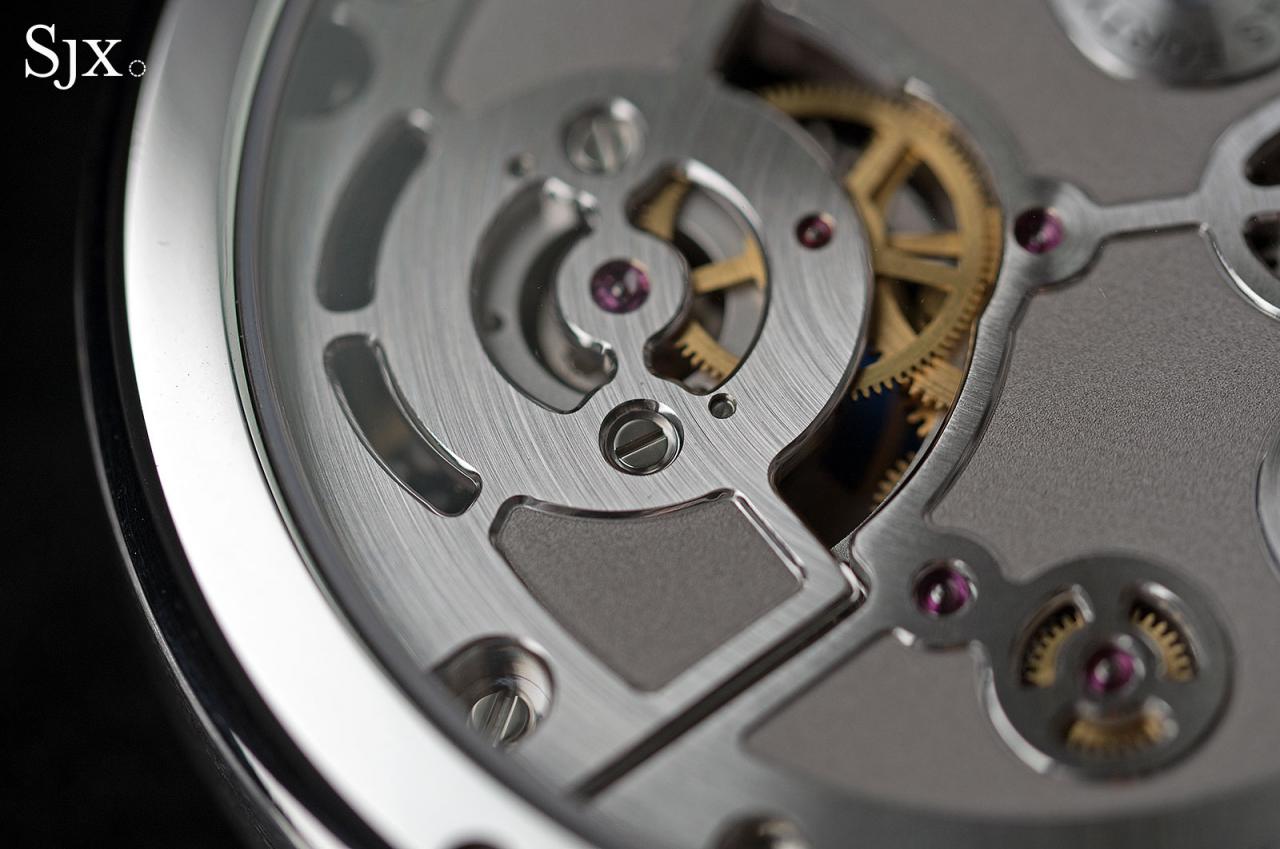
That being said, the styling of the movement, which is reminiscent of an automobile engine, doesn’t quite suit the classical design on the front. And that explanation for that is likely that the calibre 94800 was originally designed for the Ingenieur Constant-Force Tourbillon, a high octane-high complication.
The Portugieser Constant-Force Tourbillon is customisable, with the client able to mix and match for the case, dial and strap. The case is available in red gold or platinum, with the choice of four metallic finish dial colours, as well as a wide range of straps. Further customisation beyond the options offered is possible, but likely at significant additional cost.
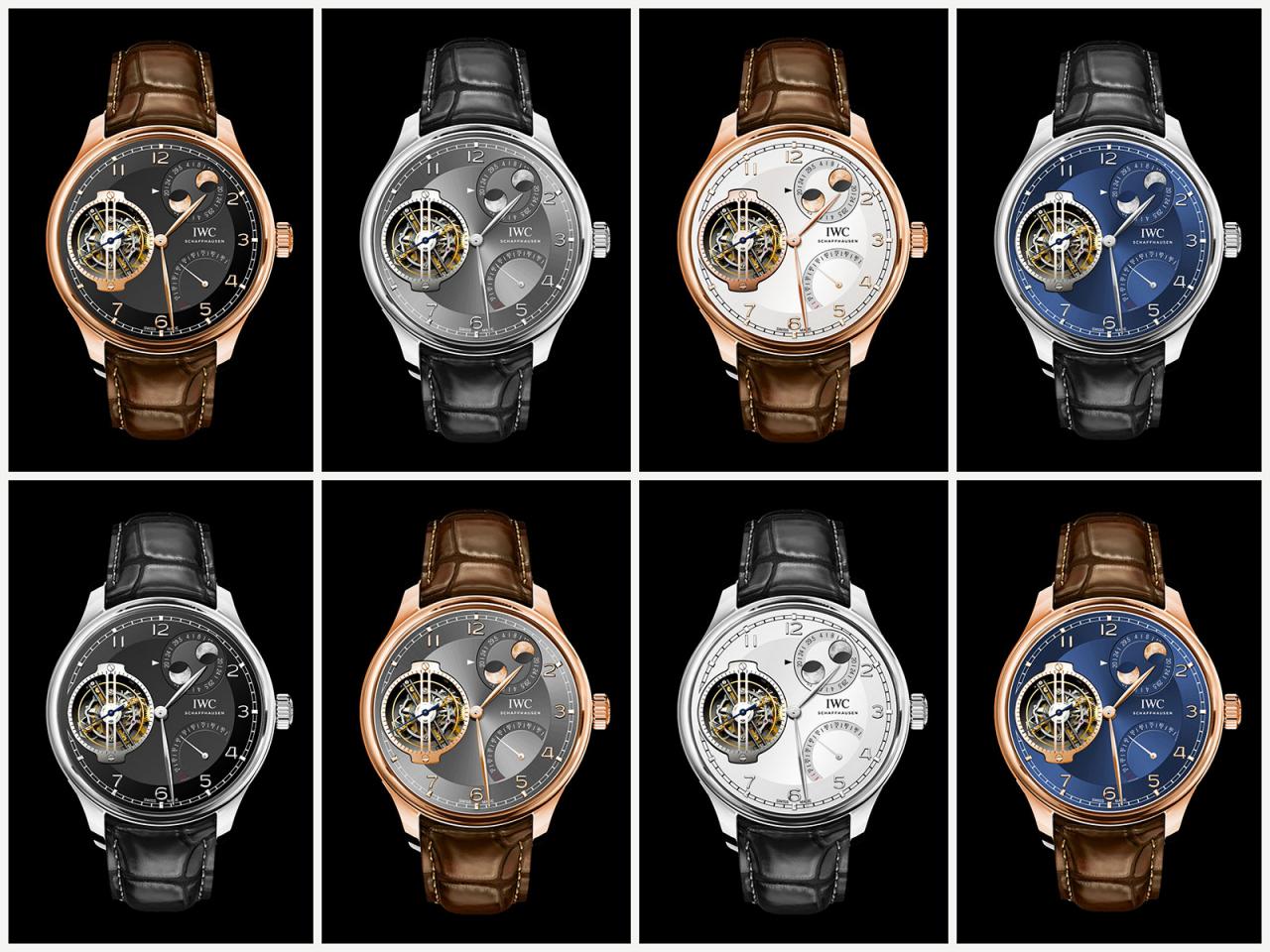
The prototype of the Portugieser Constant-Force Tourbillon is in stainless steel, which unfortunately is not an option for the watch. The lightness of the steel case makes it more wearable than the precious metal versions.
Price and availability
The Portugieser Constant-Force Tourbillon (ref. IW5901) is made to order, priced at S$325,000 in red gold and S$360,000 in platinum. Those are equivalent to US$230,000 and US$260,000 respectively.
